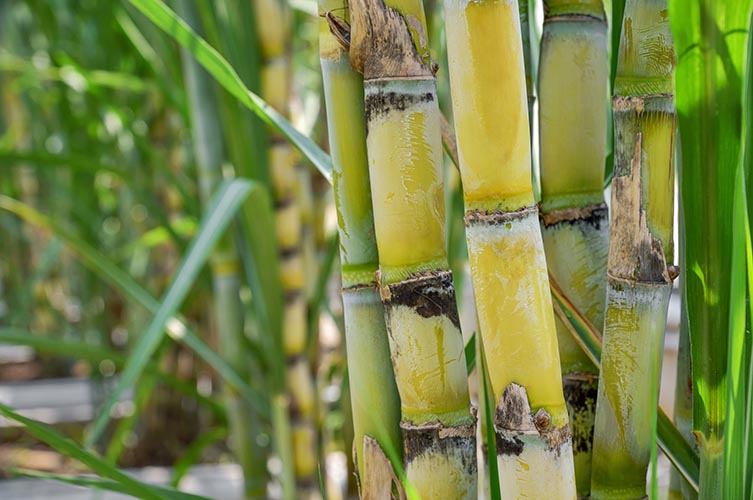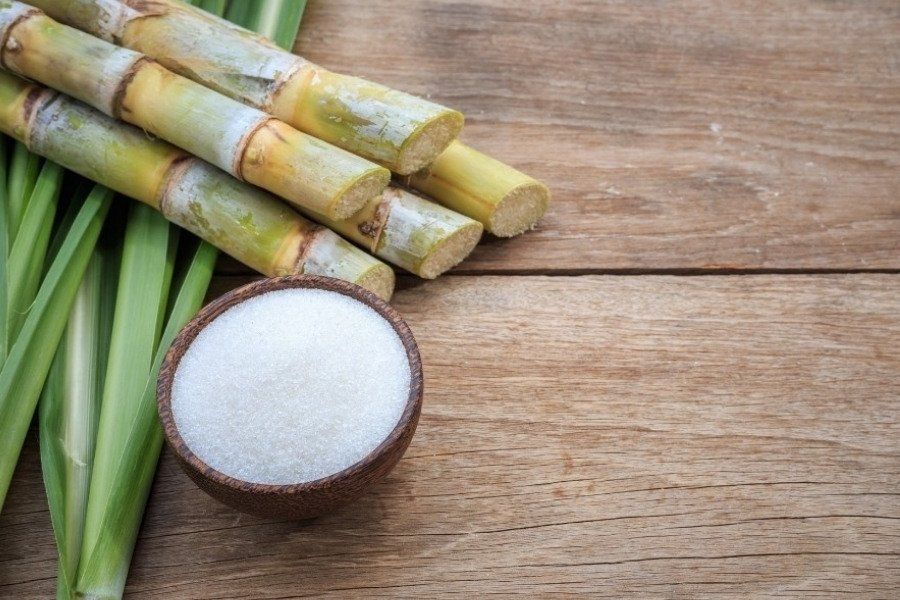Understanding How Sugar Canes Job: What Are Sugar Canes Utilized For in Food and Beyond?
Sugar walking canes are important to various aspects of both commercial and cooking methods. Their adaptability permits them to be changed into sweeteners, drinks, and also biofuels. As one discovers the trip from growing to processing, the diverse applications of sugar walking sticks reveal an intricate interaction in between agriculture and market. Nonetheless, the effects of sugar walking cane production prolong past plain energy, questioning concerning environmental sustainability and economic impact.
The Background and Beginning of Sugar Canes
Although often taken for granted in modern-day diet plans, the history and beginning of sugar canes reveal a complicated trip that covers hundreds of years. Belonging To Southeast Asia, sugar cane was initial cultivated around 8000 BCE, with its pleasant juice coming to be extremely valued by early people. By the initial millennium advertisement, it infected India, where it was improved right into taken shape sugar, a significant advancement that changed its usage and trade. The intro of sugar cane to the Mediterranean occurred around the 7th century, thanks to Arab traders, who acknowledged its economic potential.During the Age of Exploration, European colonists established sugar ranches in the Caribbean, substantially affecting worldwide trade. By the 17th century, sugar became a staple asset, fueling economies and affecting social structures. The tale of sugar walking canes is intertwined with agriculture, business, and cultural exchanges, noting its relevance fit modern-day financial systems and cooking methods.

Farming and Collecting Practices
The cultivation and harvesting of sugar canes entail numerous crucial methods that figure out the quality and return of the plant - What Are Sugar Canes Used For. Key aspects include reliable dirt preparation methods, precise growing methods, and efficient collecting approaches. Comprehending these practices is essential for enhancing manufacturing and guaranteeing sustainability in sugar cane farming
Soil Preparation Methods
Reliable dirt preparation strategies are crucial for successful sugar walking cane growing, as they lay the foundation for healthy growth and excellent yield. The process starts with soil testing to analyze nutrient degrees and pH equilibrium, enabling tailored changes. Tilling and raking are then utilized to freshen the soil and break up compaction, boosting root penetration. Including raw material, such as compost or well-rotted manure, improves soil fertility and framework. Additionally, appropriate water drainage systems are vital to prevent waterlogging, which can hinder cane growth. Cover chopping might likewise be utilized to reduce weeds and enhance soil health and wellness. These techniques collectively guarantee that sugar walking cane has the most effective environment to grow, causing durable plant wellness and raised efficiency.
Planting and Development
Effective planting and growth methods are crucial for maximizing the return of sugar walking cane. The procedure starts with selecting healthy seed canes, which are sections of fully grown stalks abundant in buds. These seed walking canes are usually planted in well-prepared dirt, ideally at a deepness of 4 to 6 inches, guaranteeing sufficient moisture and oygenation. Sugar walking cane flourishes in cozy climates with adequate sunlight and needs constant irrigation, specifically throughout dry spells. Fertilization with phosphorus, potassium, and nitrogen is essential to advertise robust development. Weed control is also vital, as competition can hinder advancement. Normal tracking of plant health and wellness and soil conditions enables prompt treatments, eventually bring about a successful plant that meets market demands.
Harvesting Approaches
Collecting sugar cane needs cautious planning and execution to assure optimal yield and quality. Commonly, the harvest takes place when the walking cane reaches excellent sugar content, typically between 12 to 18 months after planting. There are 2 key methods: handbook and mechanical harvesting. Hands-on harvesting entails laborers using machetes to cut the stalks at ground level, making certain very little damages to the plant and dirt. On the other hand, mechanical harvesting utilizes specialized machines that cut, slice, and deliver the cane, raising efficiency and lowering labor prices. Nevertheless, mechanical approaches can cause greater soil compaction and loss of nutrients. Despite the approach, prompt harvesting is crucial, as delays can cause lowered sugar top quality and enhanced sensitivity to conditions and bugs.
Processing Strategies for Sugar Extraction
The handling of sugar walking stick is a vital stage in sugar production, including a number of crucial techniques - What Are Sugar Canes Used For. Harvested cane goes through crushing and juicing to remove its sweet fluid. This juice after that continues through filtration and formation, transforming it right into the sugar most commonly utilized today
Harvesting Sugar Cane
Sugar walking cane harvesting marks an essential stage in the manufacturing procedure, where timing and technique play essential duties in maximizing yield. Normally, the harvest takes place when sugar content goes to its optimal, which differs based on climate and development problems. Employees use customized tools or manual tools to cut the cane at the base, making certain minimal damages to the plant. Proper strategy is crucial; reducing too high can reduce the top quality and amount of the sugar removed later on. After reducing, the cane needs to be carried immediately to processing centers to avoid spoilage and sugar degradation. The effectiveness of the harvesting procedure considerably affects the overall efficiency and profitability of sugar walking stick farming, making it a crucial focus for manufacturers.
Juicing and squashing
As soon as sugar cane is collected, the following essential step includes juicing and crushing to extract the wonderful fluid which contains sucrose. This procedure normally uses hefty equipment made to squash the stalks, breaking down the coarse framework and launching the juice. Rollers or mills use considerable stress, enabling the cane juice to spurt while separating the coarse residue, known as bagasse. Once smashed, the walking cane is commonly based on a collection of pushing phases to maximize juice removal. The collected juice is rich in sugar and might consist of contaminations, which will be attended to in later processing actions. In general, squashing and juicing are vital techniques that change collected sugar cane right into a liquid kind suitable for more improvement.
Filtration and Formation
Purification and crystallization are essential processes in changing raw walking stick juice right into polished sugar. After drawing out juice from crushed sugar walking canes, the fluid consists of contaminations such as plant minerals, proteins, and fibers. To achieve filtration, the juice undertakes information, where heat and lime are contributed to speed up pollutants, which are then removed. The made clear juice is then concentrated through dissipation to create a thick syrup.Next, condensation takes place, where sugar crystals create as the syrup cools. This process generally entails seeding the syrup with existing sugar crystals to promote uniform development. The resulting crystals are divided from the remaining molasses via centrifugation, yielding pure sugar. This refined item is after that dried out and packaged for different culinary uses.
Culinary Use Sugar Canes
While usually linked largely with sugar, sugar walking canes use a flexible variety of cooking applications beyond their role in sugar production. Fresh sugar cane can be juiced, producing a pleasant, invigorating drink appreciated in many exotic regions. This juice works as a base for smoothies and cocktails, including a special taste profile.Additionally, sugar walking cane syrup, derived from simplifying the juice, is used as an all-natural sugar in numerous recipes, from marinades to desserts. The syrup gives a rich, caramel-like flavor, improving both sweet and savory recipes.In some foods, sugar cane stalks are grilled or roasted, giving an unique great smoky taste that enhances vegetables and meats. Furthermore, sugar walking cane can be incorporated into desserts, such as desserts and candies, where its sweetness and fibrous appearance produce delightful contrasts. Overall, sugar walking canes add to both conventional and innovative culinary developments across diverse societies.
Industrial Applications Past Food
Beyond their cooking usages, sugar canes play a significant role in numerous industrial applications, contributing to sectors such as bioenergy, paper production, and bioplastics. The coarse product of sugar walking cane is made use of in the manufacturing of biofuels, especially ethanol, which functions as a renewable resource source that minimizes dependence on nonrenewable fuel sources. In the paper market, bagasse, the coarse deposit left after juice removal, is refined right into pulp for paper and cardboard production, advertising sustainable methods by using waste. In addition, improvements in bioplastic technology have actually resulted in the advancement of naturally degradable plastics originated from sugar walking cane, using a green option to conventional petroleum-based plastics. These commercial applications not only improve the value of sugar walking sticks however likewise align with international movements in the direction of sustainability and eco-friendly resources, highlighting their flexibility past the kitchen.

The Environmental Impact of Sugar Cane Manufacturing
The production of sugar cane, regardless of its various commercial benefits, postures considerable ecological obstacles. Logging is typically an effect, as large areas of land are gotten rid of to grow sugar walking stick, causing environment loss websites and biodiversity decrease. In addition, the extensive farming techniques connected with sugar cane growing can result in dirt destruction and disintegration. The hefty use chemicals and plant foods to make the most of returns adds to water pollution, detrimentally influencing aquatic ecosystems.Moreover, sugar cane manufacturing is linked to boosted greenhouse gas exhausts, especially with land-use changes and the burning of walking cane areas before harvest. These techniques not just affect air high quality yet additionally contribute noticeably to climate adjustment. Additionally, the water-intensive nature of sugar cane farming locations anxiety on local water sources, impacting communities and environments reliant on these products. Dealing with these environmental influences is crucial for lasting sugar cane manufacturing in the future.
Often Asked Questions
Exist Health Benefits Linked With Consuming Sugar Cane?
The concern of health and wellness advantages connected to sugar walking cane usage highlights possible advantages. Sugar walking cane may provide hydration, important minerals, and anti-oxidants, however small amounts is essential due to its natural sugar material and feasible wellness effects.
Exactly How Does Sugar Cane Contrast to Other Sugar Nutritionally?

Sugar walking cane uses natural sweet taste, primarily making blog here up sucrose, while various other sweeteners vary in make-up and caloric material. Compared to fabricated options, sugar walking stick offers minerals and vitamins, though it continues to be high in calories and carbs.
Can Sugar Walking Stick Be Expanded in Non-Tropical Regions?
Sugar walking stick largely grows in tropical climates, needing warm temperature levels and bountiful rainfall. While some non-tropical areas try cultivation, success is restricted due to insufficient warmth and expanding seasons, making large-scale manufacturing challenging.
What Are the Usual Parasites or Diseases Affecting Sugar Canes?
Usual parasites influencing sugar canes include the sugarcane borer and aphids, while conditions like leaf scald and red rot present considerable threats. Efficient monitoring approaches are crucial for maintaining healthy and balanced sugar walking cane crops and making best use of returns.
Just How Does Sugar Walking Cane Impact Citizen Economies?
The impact of sugar walking cane on neighborhood economic climates is substantial, giving employment chances, improving farming industries, and adding to exports. Its growing sustains local companies and boosts community advancement with boosted earnings and infrastructure improvements. Indigenous to Southeast Asia, sugar walking cane was first cultivated around 8000 BCE, with its pleasant juice coming to be extremely valued by early civilizations. The intro of sugar walking stick to the Mediterranean happened around the 7th century, many thanks to Arab traders, who acknowledged its financial potential.During the Age of Exploration, European colonists developed sugar haciendas in the Caribbean, substantially influencing international profession. The handling of sugar Visit Website cane is an important phase in sugar manufacturing, incorporating a number of essential methods. While frequently connected primarily with sugar, sugar canes offer a flexible range of culinary applications beyond their role in sugar production. The hefty use of pesticides and plant foods to optimize yields contributes to water pollution, detrimentally impacting water ecosystems.Moreover, sugar cane manufacturing is connected to raised greenhouse gas discharges, specifically through land-use adjustments and the burning of walking cane fields prior to harvest.